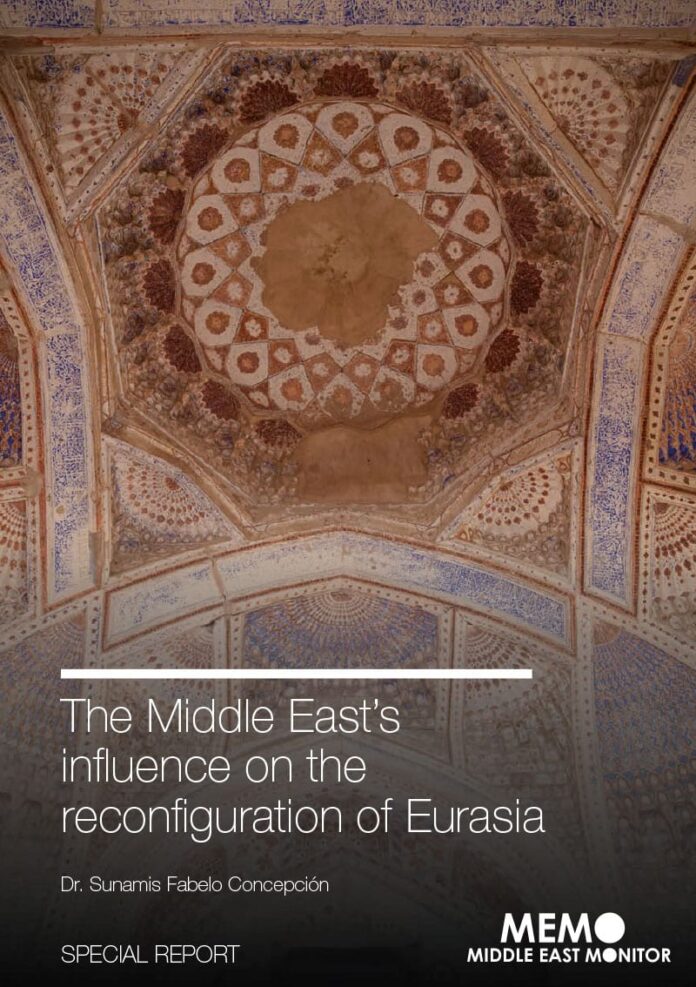Author: Dr. Sunamis Fabelo Concepción
Affiliation: International Policy Research Center (CIPI)
Organization/Publisher: Middle East Monitor
Date/Place: March 6, 2020/UK
Type of Literature: Special Report
Number of Pages: 15
Keywords: Central Asia, Eurasia, Middle East, BRI, USSR
Brief:
Central Asia is historically seen as the bridge between the civilizations, including with the Middle East. Yet it is the least clearly defined region in the world. The author says that despite its name as Central, it has never been the centre of anything. It neither encompasses China, nor India, nor Southeast Asia, nor Europe, nor the East Medium. UNESCO’s definition includes Western China, Northern Afghanistan, Pakistan, India, Iran, Caucasus and Mongolia. The Turkish Iranian Civilization continues to characterize the contemporary Central Asia, but there is also the influence of the Islamic world bridging the ties between the Central Asian region with the Middle East. It was after the fall of USSR that the Turkmen people of Central Asia and Caspian and those of Persian origin returned to their roots. There are still some central Asian countries that are being debated over whether to include them in the Middle East or not, like Iran, Maghreb and Afghanistan. Professor Reinaldo Sanchez Porro in his definition of the Middle East includes the Non-Arab countries in the Middle East, extending from the Anatolian Plateau and the Turkish mountain ranges to the Caucasus mountain knot. The Professor includes Turkey, Georgia, Azerbaijan, Armenia, Iran, Tajikistan and Afghanistan, plus the Turkmen people of Central Asia and the Russian Caucasus, such as Dagestan, Chechnya, and Ingushetia. The Eurasian Economic Union and the Belt and Road Initiative are attempts towards building a shared future community. The development of BRI, with a Eurasian source component but with a strategic look towards the Middle East, is an exponent of that vision to return to its roots.
By: Saima Rashid, CIGA Research Assistan




